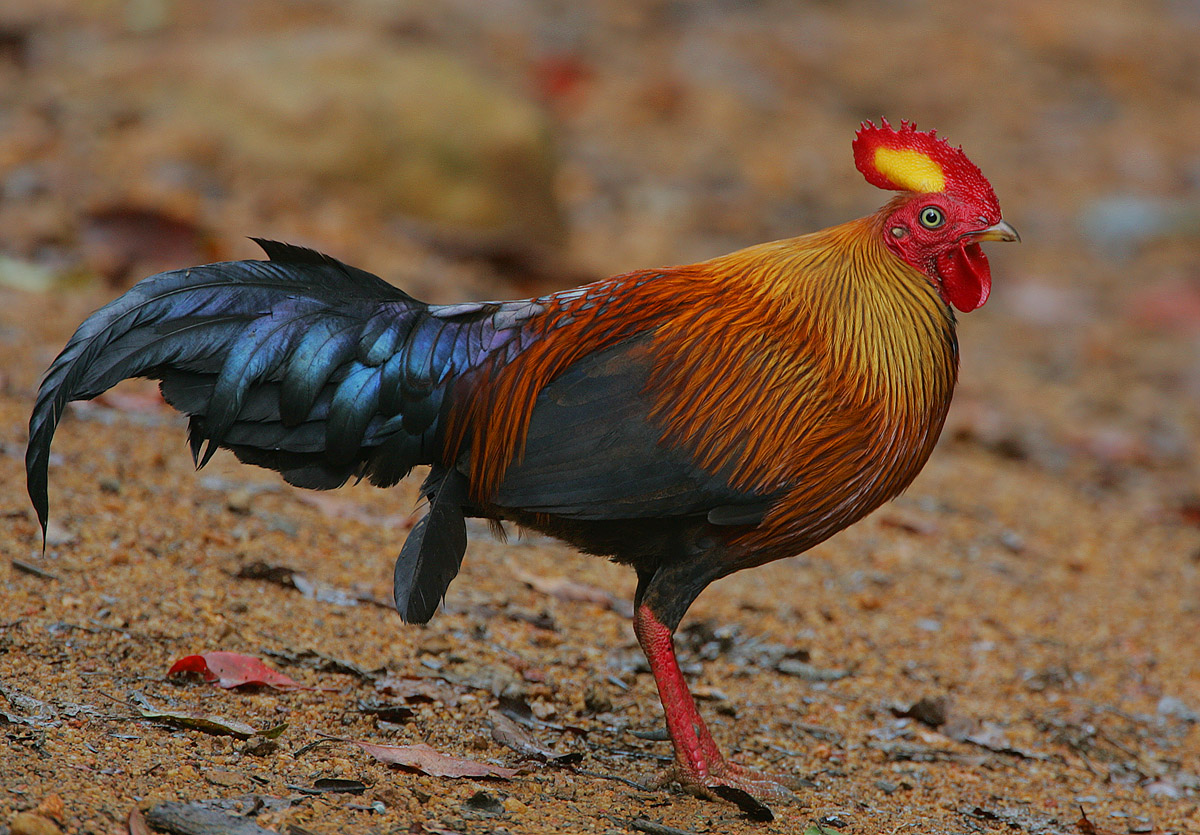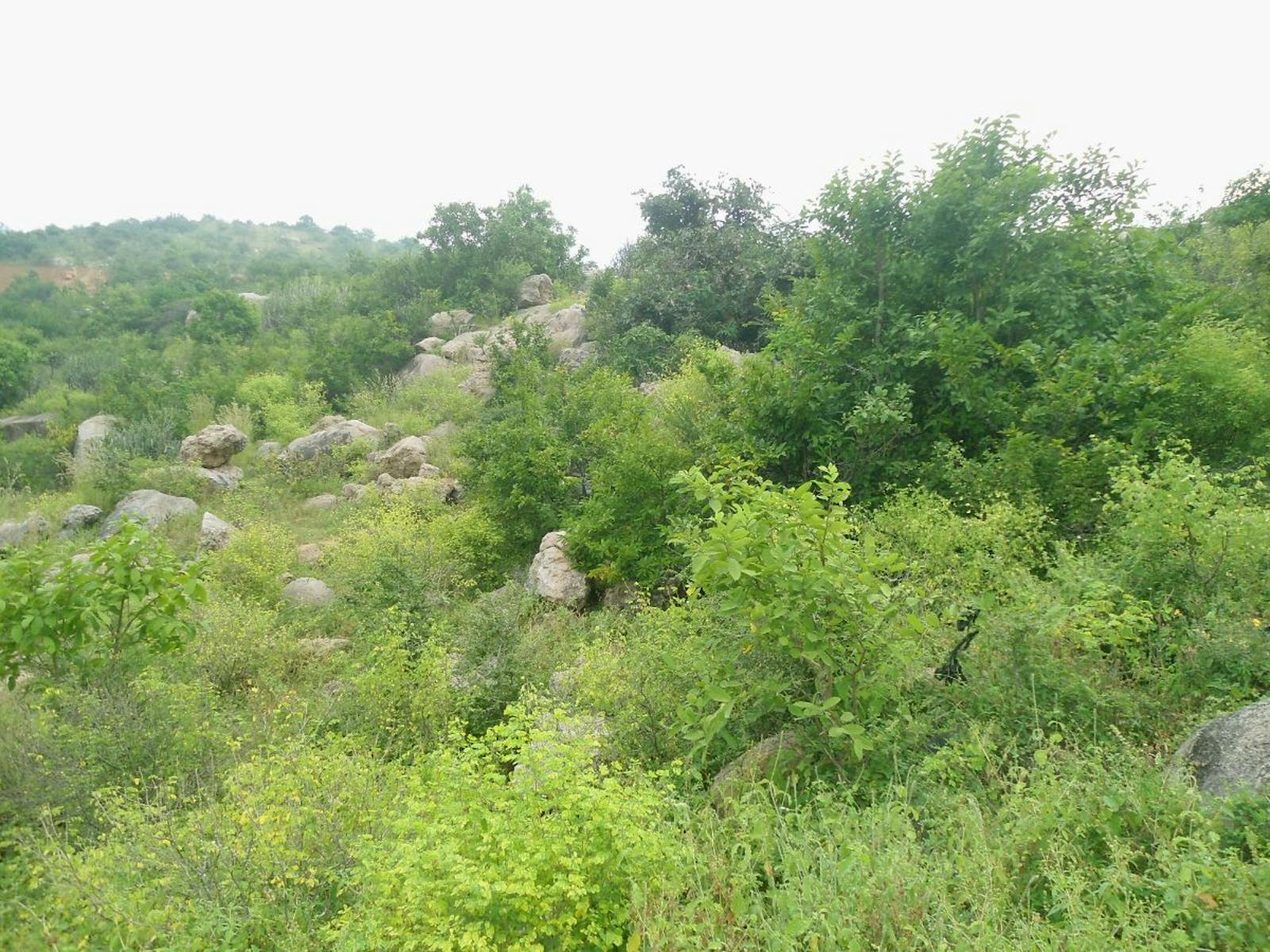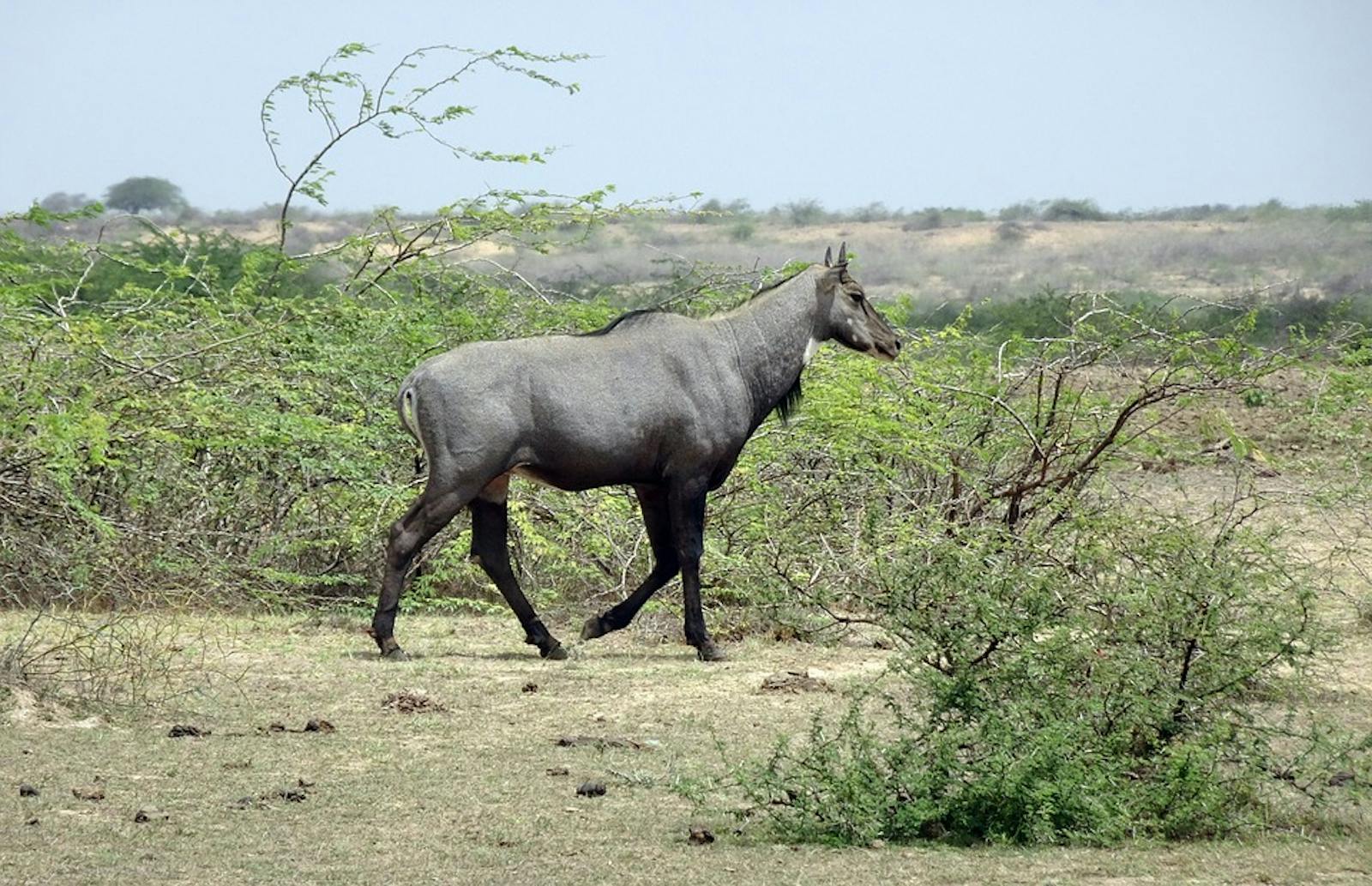Deccan Thorn Scrub Forests
The ecoregion’s land area is provided in units of 1,000 hectares. The protection goal is the Global Safety Net (GSN1) area for the given ecoregion. The protection level indicates the percentage of the GSN goal that is currently protected on a scale of 0-10.
Bioregion: Greater Deccan-Sri Lankan Forests & Drylands (IM8)
Realm: Indomalaya
Ecoregion Size (1000 ha):
34,100
Ecoregion ID:
315
Conservation Target:
4%
Protection Level:
8
States: India, Sri Lanka
The Deccan Thorn Scrub Forests ecoregion harbors the only population of the globally threatened Jerdon’s courser, which was “rediscovered” in 1986 after its last sighting in 1900. This ground-dwelling, nocturnal bird was first described 1848, and was known from a few records in this and the adjacent Central Deccan Plateau Dry Deciduous Forests ecoregions, but was assumed to be extinct until its rediscovery.
The ecoregion represents the low, sparse thorn scrub vegetation in the arid parts of the Deccan Plateau. It sprawls across the Indian Subcontinent, covering several Indian States, and into the Jaffna Peninsula in northern Sri Lanka. The plateau was once part of Gondwanaland, the ancient supercontinent that broke up during the late Jurassic period 150 million years ago.

The flagship species of the Deccan Thorn Scrub Forests ecoregion is the Jerdon’s courser. Image credit: Creative Commons
The annual rainfall in the ecoregion is less than 750 mm, with almost all of it falling between May and October. Temperatures are hot and can exceed a sweltering 40°C during the summer months.These hot, dry conditions, combined with centuries of human influence have shaped the vegetation into the low-canopied scrub with sparse, short, thorny trees. Patches of tropical dry deciduous forests lie scattered throughout, and these forests may well have been the original vegetation, before human activity encouraged a transition into scrubby vegetation.
Thorny Acacia species dominate the scrub vegetation, transitioning into Euphorbia scrub in areas with lower rainfall and exposed, rocky substrates. The patches of dry deciduous forests, especially along the Tirupathi Hill Ranges which are still well forested, are known for a rich suite of medicinal plants and other rare and interesting plants, such as an endangered, endemic cycad, Cycas beddomei, which is restricted to these hills.

Sri Lanka flying snake. Image credit: Gihan Jyaweera, Creative Commons
The lack of a closed forest canopy allows sunlight to penetrate through and allow grasses to grow below. These grasses and the Acacia vegetation support several grazing and browsing mammals and grassland specialist birds, such as the Indian bustard, lesser florican, and Jerdon’s courser.
The herbivorous mammals range from, the small four-horned antelope or chousingha, to the mid-sized blackbuck and spotted deer, to the large sambar and bluebull or nilgai, and gaur. The larger carnivores include the tiger, common leopard, golden jackal, striped hyena, and packs of wild dogs, while smaller predators such as the jungle cat and Indian fox also exist.
Small populations of Indian wolf may still persist in some of the more remote areas, but most wolves are believed to have been eliminated by a combination of poisoning by people in retaliation for livestock predation and non-availability of prey species. Sloth bear are found in this ecoregion, but are not common.

Sri Lankan Junglefowl. Image credit: Steve Garvie, Creative Commons
Most of the ecoregion’s natural habitat has been degraded to thorn scrub or cleared completely. Pastoralism is a major driver of forest degradation, from heavy grazing by cattle to extraction of forest resources by the pastoralists. The exotic thorny tree, Prosopis juliflora, is invading degraded areas, along with a suite of other exotic plants, forcing cattle into forest reserves and other protected areas in search for grazing. There are 11 protected areas in the ecoregion that barely cover 1% of the ecoregion’s area.
There still are some scattered patches of the original habitat that can—and should—be conserved, and recommended conservation actions are to: 1) prevent further conversion and degradation of these remaining forest patches, including controlling the spread of invasive species; 2) monitor populations of Jerdon’s courser, lesser florican and Cycas beddomei, and develop conservation and habitat management plans for these species; and 3) create awareness and education programs for local communities and the forest department staff of the importance of these dry forests for conservation.
Citations
1. Dutta, T., Sharma, S., McRae, B.H., Roy, P.S. and DeFries, R., 2016. Connecting the dots: mapping habitat connectivity for tigers in central India. Regional Environmental Change, 16(1), pp.53-67.
2. Wikramanayake, E, E. Dinerstein, et al. 2002. Terrestrial Ecoregions of the Indo-Pacific: A Conservation Assessment. Island Press.
3. Yumnam B, Jhala YV, Qureshi Q, et al. Prioritizing Tiger Conservation through Landscape Genetics and Habitat Linkages. Roca AL, ed. PLoS ONE. 2014;9(11):e111207. doi:10.1371/journal.pone.0111207.




